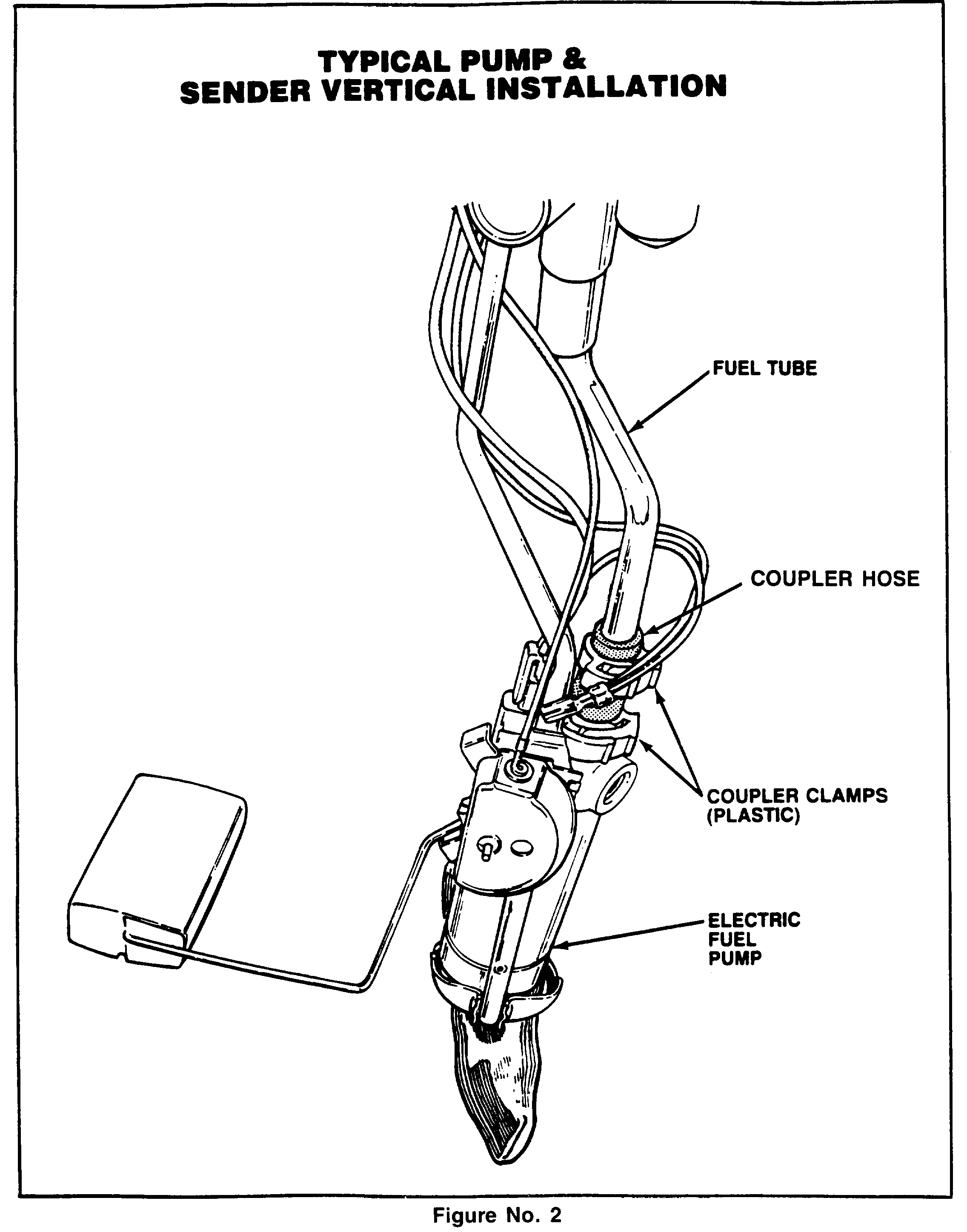ENG. NO START AFTER EXTENDED STORAGE (VITON HOSE KIT)

SUBJECT: ENGINE NO START AFTER EXTENDED STORAGE (VITON HOSE KIT)
VEHICLES AFFECTED: 1985-1990 LD TRUCKS W/FUEL INJECTION 2.5, 2.8 4.3, 5.0, 5.7, 7.4
Some 1985-90 light trucks (C, K, G, L, M, P, R, V, S, T) equipped with a throttle body injection (TBI) engines (see list below) may experience a condition where fuel delivery to the engine is interrupted causing a no start. This condition may be caused by deterioration of the in-tank fuel pump coupler hose located between the sending unit assembly and the fuel pump. The deterioration is caused by prolonged high ambient temperatures in combination with low fuel volumes (or stale fuel) and extended vehicle storage.
Engine Displacement and RPO VIN Identification
2.5 L TBI (LN8) E 2.8 L TBI (LL2) R 4.3 L TBI (LB4) Z 5.0 L TBI (L03) H 5.7 L TBI (L05) K 7.4 L TBI (L19) N
DIAGNOSTIC PROCEDURE:
See fuel system pressure test, as shown in Figure 1.
REPAIR PROCEDURE:
Vehicles that are diagnosed as exhibiting this condition may be repaired by replacing the original coupler hose, refer to Figure 2 with a new Viton coupler hose kit, P/N #25028041. The kit consists of a new Viton hose and two clamps.
Circuit Description:
When the fuel pump is running, fuel is delivered to the injector(s) and then to the regulator where the stem pressure is controlled to about 62 to 90 kPa (9 to 13 psi). Excess fuel is then returned to the fuel tank.
TEST DESCRIPTION: Numbers below refer to circled numbers on the diagnostic chart.
1. Pressure, but less than 62 kPa (9 psi) falls into two areas:
- Regulated pressure but less than 62 kPa (9 psi) - Amount of fuel to injector OK but pressure is too low. System will be lean running and may set Code 44. Also, hard starting cold and poor overall performance.
- Restricted flow causing pressure drop - Normally, a vehicle with a fuel pressure of less than 62 kPa (9 psi) at idle will not be driveable. However, if the pressure drop occurs only while driving, the engine could surge and stop when pressure is too low.
2. Restricting the outlet side of the gage allows the pump to develop its maximum pressure (dead head pressure). With battery voltage applied to the pump test terminal, fuel pressure should rise to 90 outlet hose is gradually pinched.
3. This test determines if the high fuel pressure is due to a restricted fuel return line or a throttle body pressure regulator problem.
Diagnostic Aids:
- If the vehicle is equipped with a fuel module, the module must be disconnected before performing the fuel system pressure test. Refer to SECTION 4 of the Fuel and Emissions Manual.
- Fuel system is under pressure. To avoid fuel spillage, refer to procedures in SECTION 4 for testing or making repairs requiring disassembly of fuel lines or fittings.
On V6 or V8 engines, the fuel pressure drops to almost zero psi after pump shuts "OFF".



General Motors bulletins are intended for use by professional technicians, not a "do-it-yourselfer". They are written to inform those technicians of conditions that may occur on some vehicles, or to provide information that could assist in the proper service of a vehicle. Properly trained technicians have the equipment, tools, safety instructions and know-how to do a job properly and safely. If a condition is described, do not assume that the bulletin applies to your vehicle, or that your vehicle will have that condition. See a General Motors dealer servicing your brand of General Motors vehicle for information on whether your vehicle may benefit from the information.
